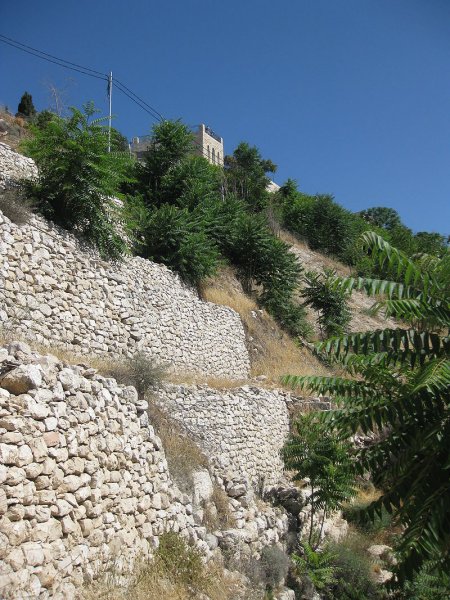The City Of David – Why Is It So Controversial?
David Tee - AncientPages.com - The city of what is now called the City of David, was first established somewhere in the 3 millennium BC. It was Canaanite and though few archaeological discoveries have illuminated this history, it remained Canaanite until David conquered it in the 10th century BC.
The Amarna letters have scholars and archaeologists thinking that Jerusalem was a mighty city prior to David’s conquest. Joshua did defeat an alliance of Kings, one from Jerusalem, but he did not overthrow the city itself.
Left: Statue of King David by Nicolas Cordier in the Borghese Chapel of the Basilica di Santa Maria Maggiore. Image credit: Wikipedia, Jastrow- Right: The City of David and the Mount of Olives. Image credit: Wikipedia, Joe Freeman
Archaeologically it is said that the original City of David lay on a small patch of land no bigger than 12 acres in size. This can be contested as archaeology is incapable of uncovering every building from the past. This stated size is part of the controversies surrounding this city.
Controversies Galore
It goes without saying that anything connected to the Bible or showing its contents correct will face opposition. Whenever a 10th Century BC discovery is made, the Minimalists object to the identification of the artifact and refuse to link it to David’s or King Solomon’s reign.
Israel Finkelstein is a leading opponent to 10th century identification and has written that David and Solomon were not rulers of a large empire but small tribal leaders. Eilat Mazar has spent most of her career excavating in the City of David.
Jebusite wall facing the Kidron Valley. Image credit: Wikipedia, Deror Avi - CC BY-SA 3.0
Ms. Mazar has found the Solomonic walls and also possibly the palace of David. Both discoveries have been highly contested by Mr. Finkelstein and other Minimalists. Her reasoning for her identification stems from the geographical topography surrounding the city. The Bible says David went down to the citadel from his palace.
These words indicate that David’s and the Jebusites’ stronghold could only be north of the City of David. Ms. Mazar’s identification and location go in contrast to Kathleen Kenyon’s conclusions who did not dig outside of the old city’s walls.
Part of the controversy surrounding archaeological work in the City of David comes from the fact that excavations have intruded on the homes and property of Arab residents in the Kidron Valley and Silwan Village.
It is a well-known fact that Muslims in medieval times built over key Christian and biblical sites to hide the history of the area. This causes a lot of problems when excavating the City of David.
Military Importance Of The City Of David
As the biblical record shows, both Joshua and David had a difficult time in overthrowing the city of Jerusalem. The Jebusites actually taunted King David when he tried. That is because the Jebusite stronghold had a lot of natural defenses helping to make the area very difficult to attack. The north side was the only vulnerable side as it had to depend on human fortifications for its defense.
Wall in the Old Town of Jerusalem. Image credit: Public Domain
But two other things helped make the City of David very difficult to overcome. First, the stronghold was high up. It commanded a very clear view of the surrounding area. Early warnings would help the residents prepare to defend themselves.
The second vital influence on military strategy was the location of the Gihon spring. The Jebusites built guard towers to protect their water supply, then they used a tunnel system to make sure they did not have to go outside the city to get their water.
These two things made the city almost impregnable.
Other Discoveries In The City Of David
The City of David is not just known for its relationship with King David and the conquest of the Promised land. It holds many other secrets as well. In recent excavations, many clay bullae were found which held the names of a variety of biblical figures. Over 50 of them date to the Babylonian conquest in the 6th century BC.
Another discovery records the name Bethlehem which is the first mentioning of that town outside of the Bible. Then there was the discovery of an edifice from the second temple era, dating to Queen Helena of Adiabene’s time. She was a lady who made a pilgrimage to Jerusalem and converted to Judaism during her visit.
While its actual size may be in doubt, the city holds many secrets to Israel’s past. Most of those uncovered secrets show that accuracy of the Biblical record.
Written by – David Tee AncientPages.com Staff Writer
Copyright © AncientPages.com All rights reserved. This material may not be published, broadcast, rewritten or redistributed in whole or part without the express written permission of AncientPages.com
Expand for referencesDiscovering the Solomonic Wall in Jerusalem: A Remarkable Archaeological Adventure by Eilat Mazar
Jerusalem Report: Solomonic Riddle by Abraham Rabinovich (1980). Bible and Spade, 9(2), 64.
New Light On David’s Capture Of Jerusalem by Bryant G. Wood (1972). Bible and Spade, 1(4), 99.
More From Ancient Pages
-
 Tuatha de Danann – ‘Gods’ Of Ireland And The Myth Of Danae And Zeus – Could The Early Irish Celts Have Ties To Ancient Greece?
Celtic Mythology | Mar 28, 2017
Tuatha de Danann – ‘Gods’ Of Ireland And The Myth Of Danae And Zeus – Could The Early Irish Celts Have Ties To Ancient Greece?
Celtic Mythology | Mar 28, 2017 -
 Mystery Of The Lost Biblical City Of Ai – Where Was It Located?
Biblical Mysteries | Apr 23, 2017
Mystery Of The Lost Biblical City Of Ai – Where Was It Located?
Biblical Mysteries | Apr 23, 2017 -
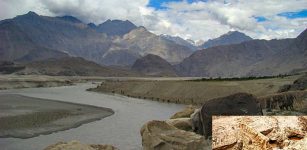 Legendary Saraswati River Is Not A Legend – It Existed 4,000 Years Ago
Archaeology | Mar 18, 2017
Legendary Saraswati River Is Not A Legend – It Existed 4,000 Years Ago
Archaeology | Mar 18, 2017 -
 Soap Was Invented In 2800 B.C By Babylonians
Ancient History Facts | Jun 17, 2016
Soap Was Invented In 2800 B.C By Babylonians
Ancient History Facts | Jun 17, 2016 -
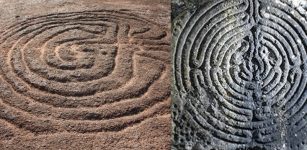 Intricate Mazes And Labyrinths: Mysterious Symbols Of Beauty And Confusion Or Communication Signals
Ancient Symbols | Jun 23, 2016
Intricate Mazes And Labyrinths: Mysterious Symbols Of Beauty And Confusion Or Communication Signals
Ancient Symbols | Jun 23, 2016 -
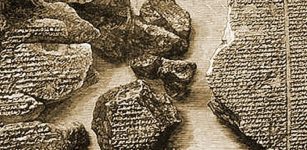 On This Day In History: Chaldean Account Of The Deluge Translated And Presented For The First Time – On Dec 3, 1872
News | Dec 3, 2016
On This Day In History: Chaldean Account Of The Deluge Translated And Presented For The First Time – On Dec 3, 1872
News | Dec 3, 2016 -
 DNA From 3,800-Year-Old Individuals Sheds New Light On Bronze Age Families
Archaeology | Aug 29, 2023
DNA From 3,800-Year-Old Individuals Sheds New Light On Bronze Age Families
Archaeology | Aug 29, 2023 -
 Fairies Weren’t Always Cute – They Used To Drink Human Blood And Kidnap Children
Featured Stories | Oct 15, 2022
Fairies Weren’t Always Cute – They Used To Drink Human Blood And Kidnap Children
Featured Stories | Oct 15, 2022 -
 Is There An Ancient Secret Connection Between The Statue Of Liberty And The Anunnaki Goddess Inanna?
Featured Stories | Sep 28, 2018
Is There An Ancient Secret Connection Between The Statue Of Liberty And The Anunnaki Goddess Inanna?
Featured Stories | Sep 28, 2018 -
 Sinister Mythical Dark Elves And Light Elves And Their Magical Ship ‘Skidbladnir’
Featured Stories | Oct 3, 2016
Sinister Mythical Dark Elves And Light Elves And Their Magical Ship ‘Skidbladnir’
Featured Stories | Oct 3, 2016 -
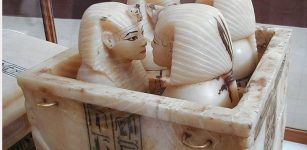 Canopic Jars: Funerary Tradition Of Ancient Egyptians And Their Beliefs In Afterlife
Ancient Traditions And Customs | Jun 23, 2017
Canopic Jars: Funerary Tradition Of Ancient Egyptians And Their Beliefs In Afterlife
Ancient Traditions And Customs | Jun 23, 2017 -
 The Mixtec – Mysterious Very Advanced Culture Of The Foremost Goldsmiths Of Mesoamerica
Civilizations | Dec 2, 2017
The Mixtec – Mysterious Very Advanced Culture Of The Foremost Goldsmiths Of Mesoamerica
Civilizations | Dec 2, 2017 -
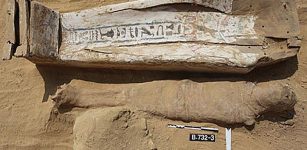 2,000-Year-Old Poorly Preserved Mummies Unearthed Near Saqqara’s Pyramid of Djoser
Archaeology | Jul 3, 2019
2,000-Year-Old Poorly Preserved Mummies Unearthed Near Saqqara’s Pyramid of Djoser
Archaeology | Jul 3, 2019 -
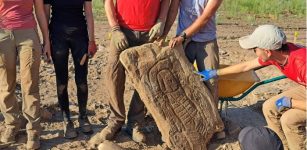 Extraordinary Archaeological Discovery In Spain
Archaeology | Oct 10, 2023
Extraordinary Archaeological Discovery In Spain
Archaeology | Oct 10, 2023 -
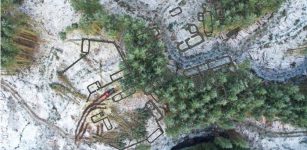 Ruins Of Post-Medieval Brunell Township Discovered In Glen Brittle Forest On The Isle of Skye
Archaeology | Feb 29, 2024
Ruins Of Post-Medieval Brunell Township Discovered In Glen Brittle Forest On The Isle of Skye
Archaeology | Feb 29, 2024 -
 Mystery Of The Lost Continent Destroyed By An Ancient Cataclysm – Wars Between The ‘Yellow Men And Black’ Men – Part 1
Featured Stories | Aug 10, 2021
Mystery Of The Lost Continent Destroyed By An Ancient Cataclysm – Wars Between The ‘Yellow Men And Black’ Men – Part 1
Featured Stories | Aug 10, 2021 -
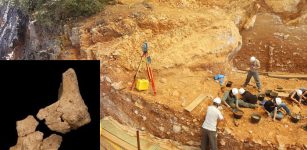 ‘Face Of First European’ – Oldest Fossil Of European Human Ancestor Found At Spain’s Atapuerca Archaeological Site
Archaeology | Jul 9, 2022
‘Face Of First European’ – Oldest Fossil Of European Human Ancestor Found At Spain’s Atapuerca Archaeological Site
Archaeology | Jul 9, 2022 -
 When And What Was The Golden Age Of Piracy?
Ancient History Facts | Jul 25, 2016
When And What Was The Golden Age Of Piracy?
Ancient History Facts | Jul 25, 2016 -
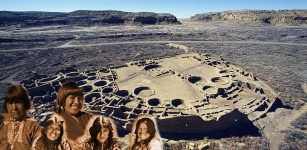 Ancient Chaco Was Organized Society Ruled By Women, Study Suggests
Archaeology | Mar 6, 2017
Ancient Chaco Was Organized Society Ruled By Women, Study Suggests
Archaeology | Mar 6, 2017 -
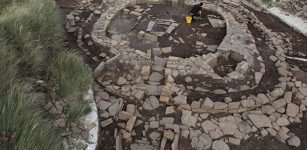 Ancient DNA Reveals Bronze Age Women Altered Genetic Landscape Of Orkney
Archaeology | Feb 7, 2022
Ancient DNA Reveals Bronze Age Women Altered Genetic Landscape Of Orkney
Archaeology | Feb 7, 2022


